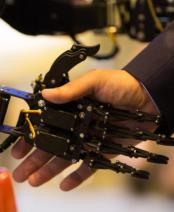When Brownian motion helps trapping particles

This article is a translation of the text published in French on the CNRS website
Brownian motion describes the random trajectory that a particle takes because of the movement of other particles around it. This phenomenon explains, for example, why small elements that are supposed to remain motionless will start to move, even though no external force gives them the necessary energy. On the other hand, it is very rare that Brownian motion leads to the stopping of a particle already in motion. However, researchers from the Hydrodynamics Laboratory (LadHyX*), Northwestern University (USA), Argonne National Laboratory (USA) and the Basque Center for Applied Mathematics (Spain) have shown that Brownian motion can participate in the capture of particles that come into contact with a cylindrical obstacle. They are then temporarily trapped at the back of the cylinder.
The team used spherical particles of one to two microns in diameter, composed of polymers and of a magnet in its center. This feature allows the particle to rotate on itself thanks to the action of magnetic fields, without which trapping cannot take place. After a series of simulations and experiments, scientists were able to explain the phenomenon. By moving and turning on itself, the particle induces flows in the surrounding fluid, here slightly salty water. They cause the appearance of pockets where the medium stagnates, one of which is located behind the cylindrical obstacle. However, this trap is not on the natural trajectory of the particle. If it is small enough to be disturbed by the Brownian motion, then it has a chance that it will be pushed into this quiet zone where it will be temporarily captured. If not, it will simply bypass the obstacle and continue its course. The particle does not systematically enter this space, but the more the experiment is repeated, the more the probability that the particle will be trapped there becomes smoother. Similarly, the larger the obstacle relative to the particle, the longer and more efficient the trapping. Published in the journal Science Advances, this work could be exploited for trapping and sorting in microfluidic and drug delivery systems, both of which rely on navigating microparticles through complex, structured landscapes.













